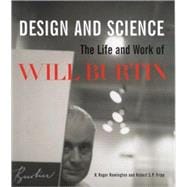
| Contents: Acknowledgements | |
| Launching a Career: The German Years | |
| Fortunate: From 'Flex O Prop' to Gunnery Manuals | |
| Fortune: Points, Picas, Burtins - and Fathering Corporate Identity | |
| 'Integration: the new discipline in design' anticipates multimedia | |
| From Virtual to Real | |
| Scientific Visualization Takes Form and Shape | |
| Kalamazoo Wows Germany | |
| Helvetica Finds New York | |
| The Burtin 'Brain' | |
| Change, Moving on, and the Union Carbide 'Atom' | |
| Metabolism Takes Physical Form | |
| Achieving Creative Control | |
| Making Science Visual | |
| The Vision Conferences | |
| Design Explains Genetics | |
| Defense of Life - and then an End | |
| Postscript | |
| Table of Contents provided by Publisher. All Rights Reserved. |
The New copy of this book will include any supplemental materials advertised. Please check the title of the book to determine if it should include any access cards, study guides, lab manuals, CDs, etc.
The Used, Rental and eBook copies of this book are not guaranteed to include any supplemental materials. Typically, only the book itself is included. This is true even if the title states it includes any access cards, study guides, lab manuals, CDs, etc.